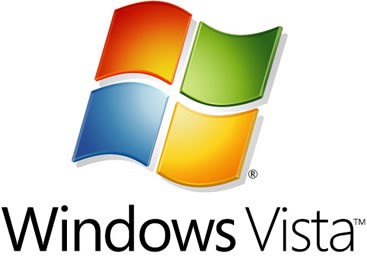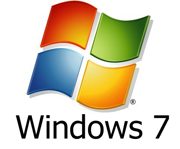 |  |
|  | |||||||
| Daily News And halat-e-hazra National & Intentional Daily News |
 |
| | Thread Tools | Search this Thread | Rate Thread | Display Modes |
|
#1
| ||||
| ||||
  Vista trumped by its sequel, Windows 7 Windows 7 builds on the best of Vista with features for home and business users OK, most techie geeks are equally Trekkie geeks (although you might also be a Star Wars fan too, which is equally acceptable but not applicable here). Ask any Trekkie which is better -- the first Star Trek movie with V'Ger or the second one, "Wrath of Khan" -- and even a novice can tell you that the second movie far outdid its predecessor. Although sequels are traditionally disappointing, this was not the case with "Khan" -- nor with Windows 7, the sequel to Vista. First off, why am I calling it a sequel to Vista? Well, if you load it up (as I've done several times, thanks to the recent beta release), your first impression will be, "Hmm. Looks like Vista." (Or if you are a Vista hater, your first impression will be, "Urrggghhh! It looks like Vista!") That's because deep down it is -- Vista done right, that is! According to Microsoft corporate vice president Mike Nash, Microsoft developers have built from what they've learned from Vista. "Our approach in Windows 7 is defined by that," he said. [ Check out the first impressions of Microsoft's Windows 7 beta in InfoWorld's special report ] After playing around with Windows 7 for about a week, I can see where the effort has been spent: not necessarily on major technical adjustments (so you application and driver developers can rest easy that your stuff, if it worked on Vista, will work on Windows 7) but mostly in making Windows 7 better, more usable, and more stable performer, one less plagued with problems. In truth, we could see that stability with Vista SP1 -- but Windows 7 builds on it, pushing forward enhancements on the business level to work better with Server 2008 R2. And why would we expect an OS release to be anything other than better than its predecessor? Sure, we can point to the Windows ME debacle and say otherwise (although that OS brought with it some nifty enhancements for which it rarely gets credit). Vista, although a resource hog to match XP performance levels, was certainly a more refined OS than its predecessor. And now Windows 7 brings with it some visually appealing nuances as well as some minor revisions under the hood (in other words, the same architecture as Vista with minor kernel enhancements). From the user perspective, Windows 7 comes with interesting new features such as Aero Peek, which replaces Show Desktop and allows you to preview what is happening behind your windows, as well as Aero Snaps, which allows you to easily snap windows to the screen's edges and adjust them quickly. There is a new Action Center that replaces the Security Center and goes beyond security with monitoring alerts and maintenance aspects of the OS. Windows 7 also yields a simplified Backup/Restore process, some networking enhancements for the home users called HomeGroup, Internet Explorer 8, and a new libraries feature for virtualized content. There are also parental control improvements (for home users, not the enterprise), along with changes to the Sidebar, which is now Windows Gadgets. Additionally, applications such as e-mail, the calendar, the photo gallery, and the moviemaker have been removed from the OS and are now available as an optional download through Windows Live Essentials. There are more, but you can see that Windows 7 is a true upgrade to Vista, not just a sequel. Here are some of the features that we need to consider from the business perspective for rolling out Windows 7 in our enterprise:
So, what should businesses do now? Microsoft recommends they install Windows Vista! In a Microsoft document titled "The Business Value of Windows Vista," which shows "five reasons to deploy now," there is a discussion on page 16 about whether to move from XP directly to Windows 7 or, as Microsoft urges, to move to Vista now and benefit from the security features and productivity enhancements immediately. The paper notes that there a few kernel changes between Vista SP1 and Windows 7, so devices will work smoothly between the two and software compatibility will be the same. Arguably, waiting to move from XP directly to Windows 7 shouldn't be any more difficult, from a technical perspective, than going from XP to Vista to Windows 7. Microsoft's argument is, why wait for the security and productivity enhancements in Windows 7 when you can have many of them now through Vista? And why throw 10 years of changes on users all in one shot when you can break it up a bit? The true deployment cycle isn't expected for Windows 7 until mid-2011 -- although Microsoft is hoping for a late-2009 or early-2010 release. (Note: While everyone else is saying January 2010, I believe Microsoft wants to get this out the door later this year, before the holiday-buying season, something the company failed to do with Vista. For this reason, Microsoft is apparently only doing one beta and one release candidate.) What are your plans? Waiting a bit longer to join us in the 21st century? Going from XP to Windows 7? Or maybe Ubuntu is in your future? Let me know what you're thinking. Posted by J. Peter Bruzzese
__________________ (¯`v´¯) `*.¸.*` ¸.*´¸.*´¨) ¸.*´¨) (¸.*´ (¸.Bzu Forum  Don't cry because it's over, smile because it happened Don't cry because it's over, smile because it happened  |
 |
| Tags |
| sequel, trumped, vista, windows |
« Previous Thread
|
Next Thread »
| Currently Active Users Viewing This Thread: 1 (0 members and 1 guests) | |
| |
 Similar Threads
Similar Threads | ||||
| Thread | Thread Starter | Forum | Replies | Last Post |
| Hidden Blue tooth software in Windows XP and Vista | usman_latif_ch | PC and Windows Tutorial | 3 | 25-11-2011 01:28 AM |
| Create Ultra Hidden Folder in windows xp and vista | usman_latif_ch | PC and Windows Tutorial | 0 | 27-07-2009 09:37 PM |
| Windows Vista Effects | Waqas Ahmed | PC and Windows Tutorial | 2 | 07-06-2009 12:28 PM |
| Create Bootable USB Drive To Install Windows Vista | BSIT07-01 | PC and Windows Tutorial | 0 | 16-11-2008 02:49 AM |
Almuslimeen.info | BZU Multan | Dedicated server hosting
Note: All trademarks and copyrights held by respective owners. We will take action against any copyright violation if it is proved to us.
All times are GMT +5. The time now is 12:36 AM.
Powered by vBulletin® Version 3.8.2
Copyright ©2000 - 2024, Jelsoft Enterprises Ltd.
Copyright ©2000 - 2024, Jelsoft Enterprises Ltd.


 .BZU.
.BZU.






 Linear Mode
Linear Mode

